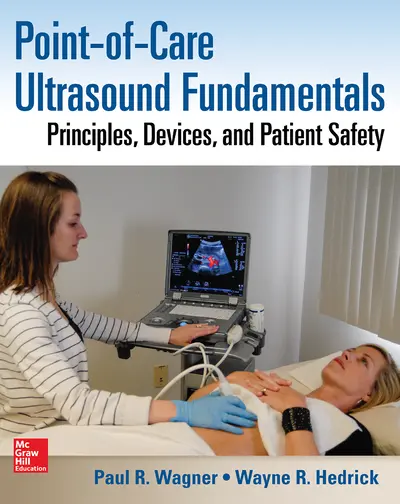My Account Details

ISBN10: 0071830022 | ISBN13: 9780071830027

Step 1 . Download Adobe Digital Editions to your PC or Mac desktop/laptop.
Step 2. Register and authorize your Adobe ID (optional). To access your eBook on multiple devices, first create an Adobe ID at account.adobe.com. Then, open Adobe Digital Editions, go to the Help menu, and select "Authorize Computer" to link your Adobe ID.
Step 3. Open Your eBook. Use Adobe Digital Editions to open the file. If the eBook doesn’t open, contact customer service for assistance.
Publisher's Note: Products purchased from Third Party sellers are not guaranteed by the publisher for quality, authenticity, or access to any online entitlements included with the product. Introducing the first definitive training guide to point-of-care ultrasound Whether you're a medical student or other health professional, this complete, one-stop tutorial takes you through everything you need to know about ultrasound scanners and their use across the full range of medical settings. Here, you'll get an incisive, step-by-step overview of the physical principles of ultrasound with detailed explanations of how each control works and why it's needed. Point-of-Care Ultrasound Fundamentals is the one clinical resource that will take your familiarity with portable ultrasound to the next level. No other sourcebook goes further to help you master ultrasound tools and techniques--so you can maximize the quality of diagnostic information obtained during the examination while ensuring patient safety and observing ergonomically-sound scanning techniques. FEATURES: Covers the rapid adoption of new point-of-care ultrasound devices, from simple cell phone-size units to highly sophisticated and costly multi-transducer scanners offering 2D real-time, Duplex Doppler, and color flow imaging Emphasis on ensuring ultrasound safety offers insight into ultrasound interactions with tissue and the amount of energy transmitted to the patient, particularly when scanning the fetus Detailed descriptions of universal scanning techniques include diagrams and photographs illustrating correct and incorrect scanning methods to help prevent sonographer injury Excellent pedagogy includes chapter-opening learning objectives and key terms Numerous tables and figures throughout include precisely reproduced ultrasound images
Chapter 1. Basic Ultrasound Physics
Chapter 2. Real-Time Image Formation
Chapter 3. Transducers
Chapter 4. Real-Time B-Mode Imaging
Chapter 5. Doppler Principles and Displays
Chapter 6. Normal Blood Flow in Arteries and Veins
Section II : Equipment and Controls
Chapter 7. Types of Devices
Chapter 8. Doppler Evaluatin of Blodd Flow
Section III: Universal Scanning Techniques, Ergonomics, and Patient Safety
Chapter 9. Basic Scanning Techniques and Ergonomics
Chapter 10. Clinical Safety
Index
Need support? We're here to help - Get real-world support and resources every step of the way.